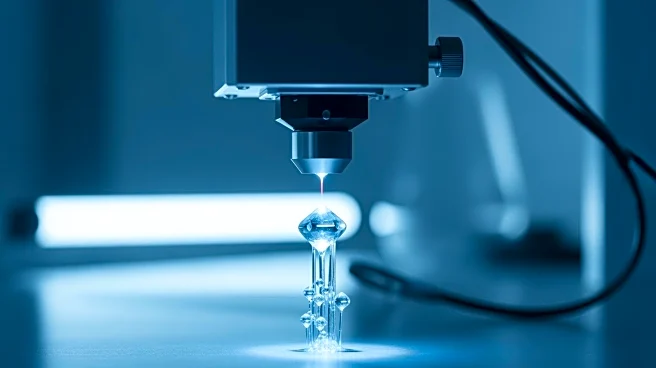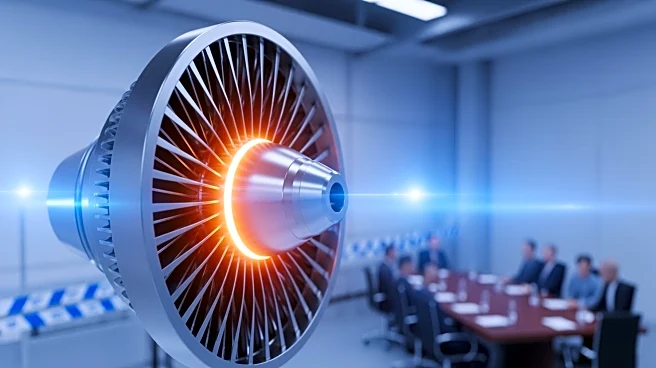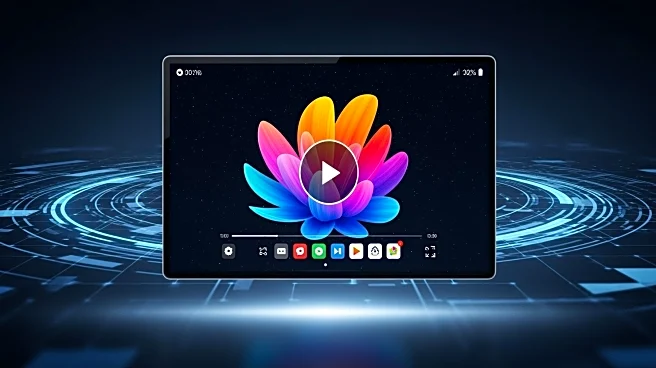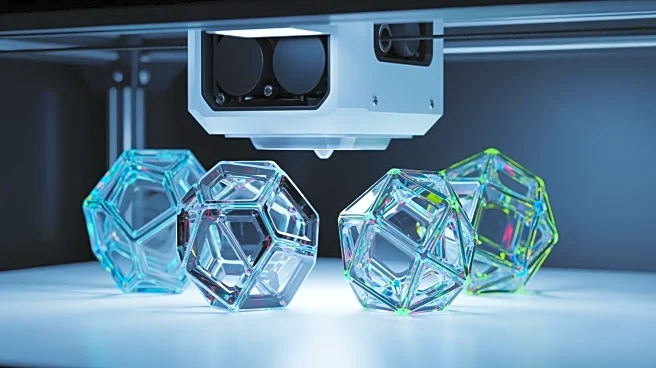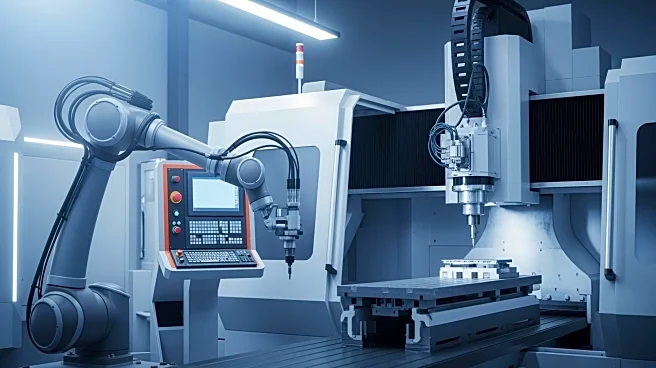What's Happening?
Researchers have made significant advancements in triplet fusion upconversion, a process with potential applications in solar cells and bioimaging. By using surface plasmons along a silver-film interface,
they have enhanced the absorption and reduced the intensity threshold for upconversion films by a factor of 19. This improvement also increased the external quantum efficiency by a factor of 17. The study demonstrated the real-world viability of this technology by integrating it into a white-emitting organic light-emitting diode (OLED), achieving a high color rendering index without high-energy polarons or triplets.
Why It's Important?
This breakthrough in plasmon-enhanced upconversion could revolutionize several industries by improving the efficiency of solar cells, photoredox catalysis, and bioimaging technologies. The ability to achieve high efficiency at lower power densities makes this technology more practical for commercial applications. The integration of upconversion films into OLEDs could lead to more efficient lighting and display technologies, reducing energy consumption and enhancing performance.
What's Next?
The next steps involve further refining the technology to enhance its efficiency and exploring additional applications in various fields. Researchers may focus on scaling up the production of these upconversion films and integrating them into commercial products. Continued research could also explore new materials and configurations to further improve performance and reduce costs.



